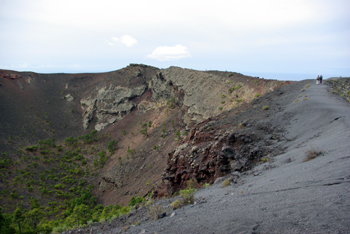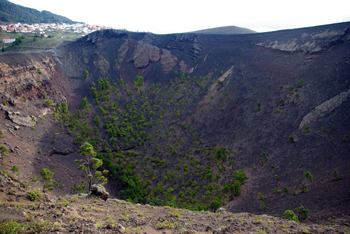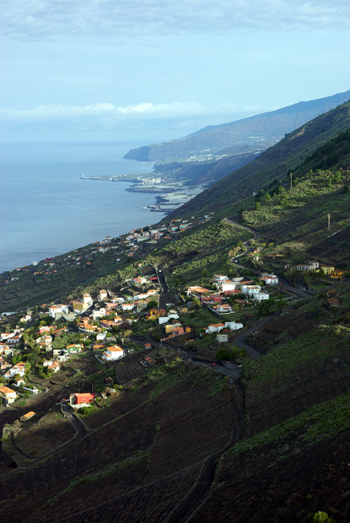The Tsunami Risk
You may remember the fuss in 2001 when two geologists, Steven Ward and Simon Day, announced their theory that the west side of the island of La Palma would collapse one day, creating a mega-tsunami that would cross the entire Atlantic and still be anything up to 25 metres high when it hit New York, and indeed everything from Newfoundland in Canada to Recife in Brazil.
These days, almost all geologists seem to disagree.
Certainly there is a fault line, and some movement has been detected, but the fault appears to be 4 km long, not 25 km. There is no evidence that it's 2 km deep, so any landslide would be superficial and might not happen all at once. There's a volcano, but it's comparatively small. And there's a lot of water inside the island, but if the volcano erupts and turns it to steam, it has lots and lots of escape routes through the porous lava. Therefore it won't push the rock into a landslide.
The tsunami that did such awful damage in December 2004 was caused by an earthquake along 1,000 km of sea bed. If a landslide does happen on La Palma, it couldn't possibly be longer than 25 km, so the tsunami will weaken as it spreads out. You'd hardly get a splash the other side of the Atlantic.
By the way, the research was paid for by an American insurance company. And it wasn't published in a peer-reviewed journal, which means that other scientists didn't get chance to give opinions before it was broadcast.
My opinion? It's a load of hype.
You can read more at: http://www.lapalma-tsunami.com/tsunami.html
and http://www.iberianature.com/material/megatsunami.html
Labels: Canaries, Canary islands, geology, La Palma, tsunami
Bookmark with:
 Del.icio.us Del.icio.us
|
 Digg Digg
|
 Reddit Reddit
|
 Facebook Facebook
|
 Furl It Furl It
|
 Newsvine Newsvine
|
|





 View from the crater, south towards Teneguía and the salt factory
View from the crater, south towards Teneguía and the salt factory


